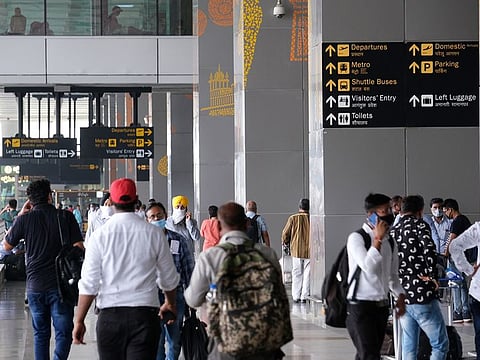No more cheap domestic flights in India as major airports set to hike airline charges
Three of India's busiest airports hike tariffs on airlines and a fourth could join

Dubai: Airline rates on India’s domestic flights will start getting costlier after three of the busiest airports in the country hiked charges on airlines for operating there. The three airports are those of Mumbai, Bengaluru and Hyderabad, and chances are that Delhi could soon join in. The hikes become effective April next.
Together, these airports account for up to 50 per cent of the country’s passenger volumes. This leaves little room for airlines not to hike ticket rates.
“In the short term, airlines will have to pass this on and this will affect demand because Indian travellers look at fares above anything else,” said Satyendra Pandey, Managing Director at AT-TV.
Before the pandemic, India’s domestic air routes had some of the lowest rates on offer amidst sky-high competition among carriers. These carriers, which already operate on razor-thin margins, will lose more cash if an all-out price were to ensue. Indian airlines incurred financial losses worth $3.6 billion in the last financial year amid the pandemic, as per some industry estimates.
Pandey blames the current state of affairs on age-old structural issues. “In Indian aviation, the airports and airlines never thought of it as a full ecosystem, as opposed to places like Dubai and Singapore, where the policies of all the players are fairly aligned,” said Pandey.
Airport charges
Airlines usually pay airports rent for counter and gate space, training and storage facilities, hangars, offices and maintenance facilities. They additionally pay for landing and parking fees, and to hold a lease on ticket counters and gate space to occupy an exclusive area. With the pandemic leading to a grounding of commercial fleets, airports lost their main source of revenue.
The second challenge for airlines is operating in a price sensitive market. “100 rupees (Dh5), which is less than the price of a cup of tea at the airport, can actually make the difference between someone choosing to fly or not to fly,” added Pandey.
IATA weighs in
The issue of airports hiking charges is a global one and the head of the International Air Transport Association (IATA) has been pretty outspoken on the matter.
“They continue to shock everybody with their demand for a 90 per cent increase in airport charges at a time when the industry is trying to get back on its feet,” said Willie Walsh, IATA’s Director-General, during a media briefing on Wednesday.
“We've got airports in Amsterdam, India and South Africa looking to ramp up costs believing that’s going to be helpful to the industry - and it clearly isn’t. If airport charges go up, ultimately, the consumer is going to have to pay for that because airlines are not in a position to absorb those costs, particularly in this environment.”
Domestic traffic surges
For now, India’s airlines are riding high on domestic demand after the government relaxed caps on airfares and capacity. Domestic air passenger traffic jumped about 64 per cent in November, compared to a year earlier. The airlines’ capacity deployment in the same month was around 49 per cent higher than November 2020, according to ICRA, an Indian subsidiary of Moody’s.
“Though the recovery continued in November, demand continues to be subdued from the corporate traveler segment,” said Suprio Banerjee, Vice-President and Sector Head, ICRA. “Moreover, the threat of a new variant, which has pushed the resumption of scheduled international operations, has the potential to derail the domestic recovery too, if it becomes a source of fresh round of lockdowns in the near term.”
India’s aviation regulator said it would provide a fresh date for international flight resumption after Omicron cases started emerging in several countries. This has now been pushed to end January. It was initially targeting December 15 to end its ‘bubble’ agreement aviation policy, which has been blamed by industry watchers for a supply crunch on several international routes, including the UAE-India sector.
Fares have skyrocketed on the route as tourists from India continue to pour into the country. If capacity is increased, “then just because of a supply demand equation, I think the fares will go down in the near term,” said Pandey.
Sign up for the Daily Briefing
Get the latest news and updates straight to your inbox



